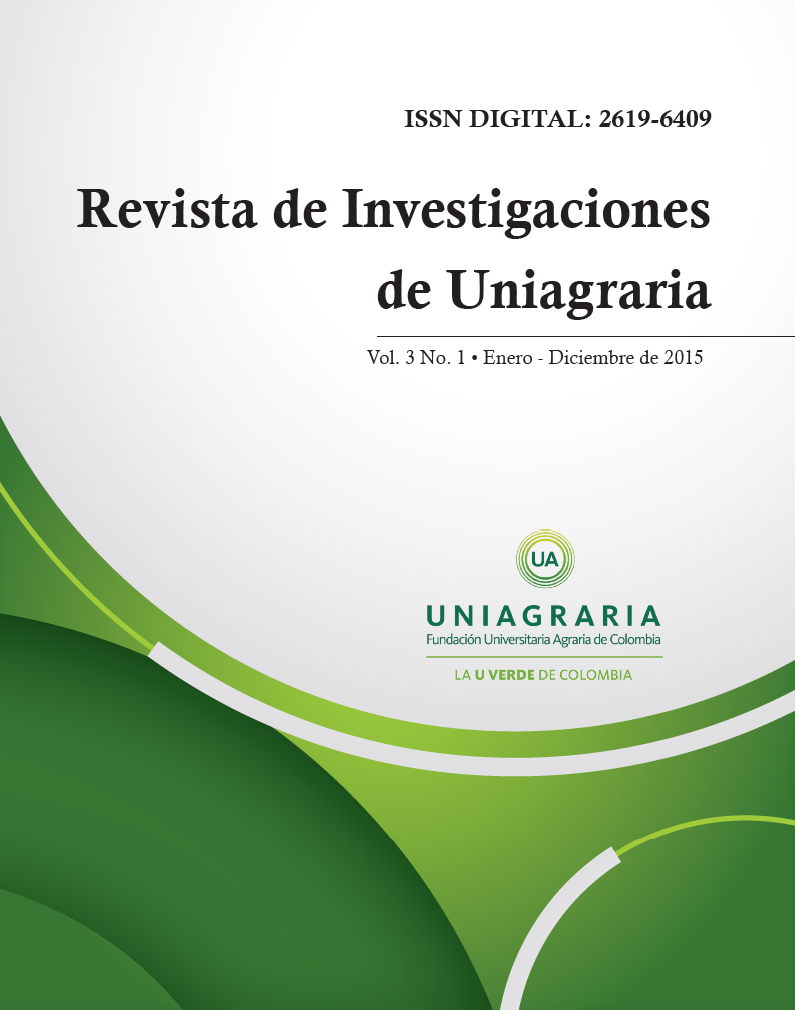Abstract
The aim of this article is to present an evaluation study of a bio-input made of fique extract (Furcraea spp.) in order to take control of the development and the spreading of rust (Hemileia vastatrix); a disease that directly attacks to the plant development of Caturra coffee variety decreasing the productivity and the quality of the grain. First, the leaves of fique, black common variety, are picked up in the municipality of Nariño; then, the juice of the leaves is extracted through a roller mill and it is stored in sterile containers for six days in order to obtain a fermentation natural process. After that, the juice is pasteurized to stop the fermentation process. In addition to this, a study of physicochemical characterization is carried out to determine pH, density, boiling point and soluble solids levels. A phytochemical analysis by thin layer chromatography (TLC) and a quantitative characterization (HPLC) are lead to ascertain the presence of secondary metabolites such as saponins, alkaloids, flavonoids, tannins, steroids. These metabolites have biocidal properties that can be considered for studies on coffee rust control, specifically, related to Caturra coffee variety. The research is conducted in Cielo Verde farm, located in vereda: La Pradera; municipaliy: Nariño; department: Nariño. These research is undertaken identifying the severity percentage of the pathogen utilizing the scale proposed by James Clive. Different concentrations of the bio-input are evaluated, 1.000, 10.000 y 100.000 μg/mL, determining the incident rate of the biocide of the rust on the leaves of the coffee crops.Downloads
Download data is not yet available.
